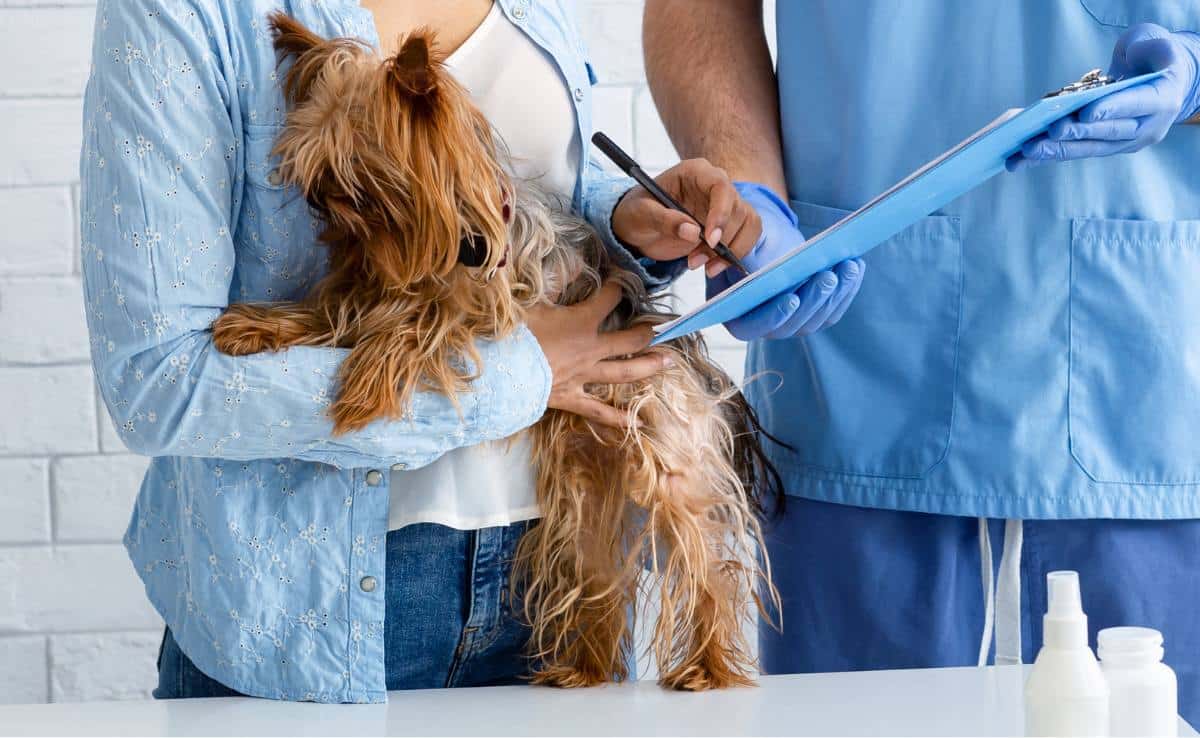Pet Insurance With No Waiting Periods & Shortest Waiting Periods: Nationwide, Pets Best, ASPCA, & More
When you purchase through links on our site, we may earn a commission. Here’s how it works.

All pet insurance companies have waiting periods, but some are shorter than others. Ultimately, this impacts when coverage kicks in for your pet. The shortest illness waiting period is 14 days (companies include Pets Best, Figo, Embrace, Lemonade, AKC Pet Insurance, ASPCA Pet Health Insurance, Spot, and Nationwide). Figo has the shortest accident waiting period, with only one day.
Table of Contents
Some companies have additional waiting periods for specific conditions. Two common ones are cruciate ligament issues and hip dysplasia, with the shortest being 14 days for each from some providers. Learn more about waiting periods and how they impact your pet insurance policy coverage.
Can I Get Immediate Pet Insurance?
No company offers instant pet insurance coverage. There is no such thing as pet insurance without waiting periods or same-day pet insurance. That’s why it’s crucial to subscribe to a pet insurance plan before your pet sustains health problems. Getting pet health insurance at a young age ensures coverage for as many accidents and illnesses that your pet may experience during its lifetime.

Why Do Waiting Periods Exist?
Ultimately, waiting periods exist to weed out recent illnesses and accidents pets may have sustained before obtaining insurance, allowing companies to keep premiums lower. Without waiting periods, companies could receive claims for conditions that should have been excluded from coverage during the quote process*, increasing premiums and, ultimately, making pet insurance less affordable. Charging and receiving fair policy premiums allows pet insurance providers to pay for claims and remain profitable.
*If a customer misrepresents their pet’s condition during the application process, they are guilty of insurance fraud, a felony in most U.S. states.
Some pet insurance companies also offer optional wellness plans covering preventative care items like flea and tick medication, microchipping, annual wellness exams, and more. Wellness plans typically have no waiting periods and become active on the policy’s effective date.
What Are Common Pet Insurance Waiting Periods?
Pet insurance companies have two primary waiting periods, one for illnesses and one for accidents. It’s also common to see additional waiting periods for more serious health conditions (e.g., hip dysplasia, canine cruciate ligaments, Intervertebral Disc Disease [IVDD], and other orthopedic conditions).
It’s most common for pet insurance companies to have roughly a 14-day waiting period for illnesses and a 3-day waiting period for accidents. As for hip dysplasia, cruciate ligament injuries, IVDD, and other orthopedic conditions, it’s more of a mixed bag, ranging from 14 days to a longer waiting period at 12 months.
*States are gradually adopting a Model Law for pet insurance, aiming to standardize regulations, including uniform waiting periods. In California, Delaware, Louisiana, Maine, Mississippi, Nebraska, New Hampshire, Washington, Rhode Island, and Maryland, waiting periods are:
- Accidents: 0 days
- Illnesses: 14 days
- Cruciate Ligament Conditions: 30 days
- Routine Care: 0 days
Who Has The Shortest Waiting Periods?
In other words, when does pet insurance take effect with my provider? This varies by pet insurance provider. Once you’ve signed your contract, you’ll know your insurance policy’s effective date. Here’s a chart so you can see which of the most popular pet insurance companies have the shortest waiting periods.
Can I Get Retroactive Pet Insurance?
No, you cannot purchase pet insurance and have it be effective beginning on a date that has already passed.
When Is The Best Time To Buy Pet Insurance?
We know many pet parents search for pet insurance that’s effective immediately because their dog has already experienced an accident or illness, and they want it to be covered by the policy. Unfortunately, given the nature of insurance, this doesn’t exist. Most pet insurance companies don’t cover pre-existing conditions. So, if your dog suffers from allergies or was hit by a car before you purchased your policy, then those items will be considered pre-existing and are not eligible for illness and accident coverage.
This is why we urge you to purchase pet insurance as early in your pet’s life as possible. Last-minute pet insurance can lead to more exclusions, and we want you to get the most out of your policy.
On the other hand, some providers cover pre-existing conditions that can be treated. The definition of curable pre-existing conditions varies among pet insurance companies. Usually, there’s a waiting period after which the pet is symptom-free. Pre-existing curable conditions may include kennel cough, diarrhea, vomiting, ear infections, and urinary tract infections.
If you’d like to learn more about pet insurance and how it works in general, you can read our pet insurance 101 guide. We explain what pet insurance is, how it works, why you need it, what it covers, and more. Then you can read about the best pet insurance companies to see who we’ve ranked as our top picks this year.
Methodology
My team and I conduct extensive research on the most reputable pet insurance companies, analyzing customer feedback, policy changes, and industry trends. Our licensed insurance agent fact-checks everything, and we update our reviews year-round as insurers adjust premiums, coverage, exclusions, and customer service.
We rank each U.S. pet insurance provider using a 100-point scale, ensuring an unbiased breakdown of how companies perform in real-world claims.
Our Ranking Criteria
- Coverage & Exclusions (30%) – We analyze policies, exclusions, and age restrictions, rewarding companies with fewer coverage limitations.
- Pricing (15%) – We run thousands of sample quotes and factor in extra fees, discounts, and add-ons.
- Customer Service & Reputation (12%) – We review hundreds of customer experiences, assess the sign-up process, and evaluate claim support.
- Financial Strength (10%) – We examine A.M. Best & Demotech ratings to ensure companies can pay claims reliably.
- Customization Options (10%) – Providers with more deductible, reimbursement, and payout flexibility rank higher.
- Waiting Periods (5%) – Shorter illness & accident waiting periods result in a better score.
- Claim Processing (5%) – Companies offering fast reimbursements and direct vet pay score higher.
- Innovation (3%) – We recognize unique offerings and advanced technology in the industry.
Unbiased Pet Insurance Rankings: Putting Pets First
Unlike many review sites, we don’t sell rankings—every provider earns its spot based on real performance. Our in-depth comparisons help pet parents make informed decisions, while insurers use our reviews to improve their policies. We only recommend the best because that’s what our readers deserve.
Why Trust Canine Journal
Canine Journal has been covering the topic of pet insurance since 2012, well before other conglomerates discovered the rising popularity of health care for our pets. Many of our authors have personal experience with pet insurance, including Kimberly Alt, who has been Canine Journal’s go-to author for pet insurance for over a decade, having written about nearly every possible facet related to pet insurance. Kimberly knows the subject so well that she can answer a breadth and depth of pet insurance questions immediately. And on the rare occasion she doesn’t know the answer off the top of her head, she can find it within minutes due to her extensive list of resources. Kimberly also consulted with Michelle Schenker, Canine Journal’s in-house licensed insurance agent, for additional expertise, to ensure accuracy, and give Canine Journal the authority to write about and assist readers in purchasing pet insurance policies that are accurately represented.












